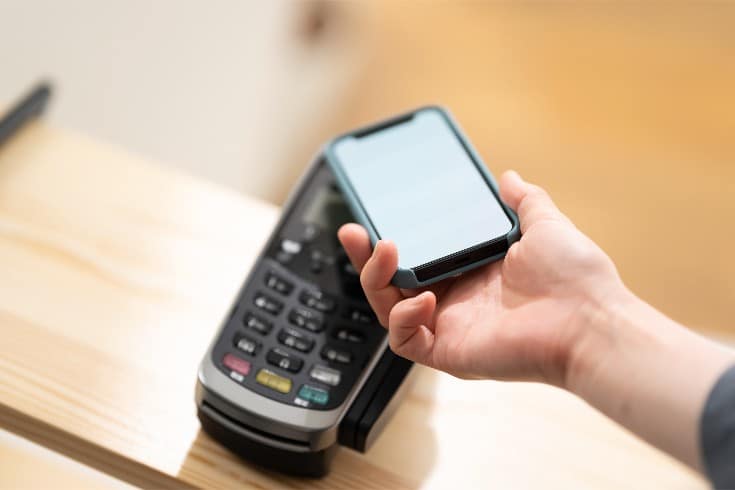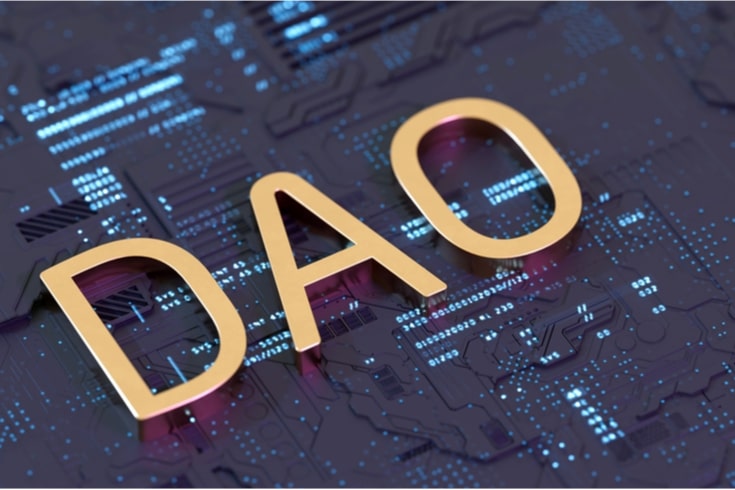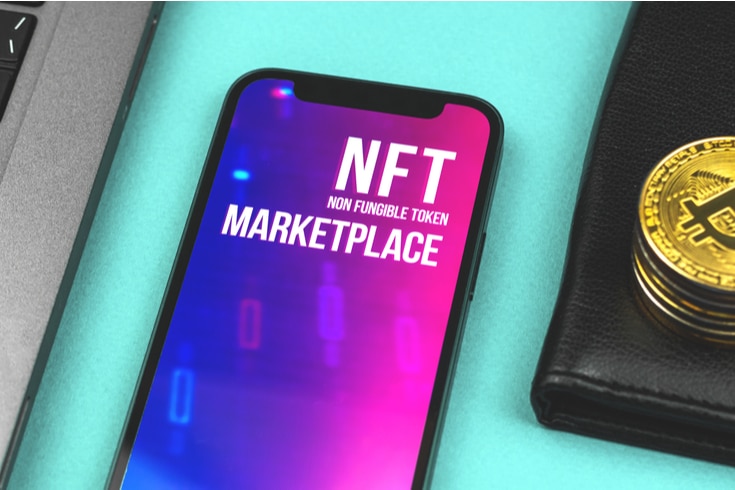What are Crypto Assets? Detailed Explanation of Legal Definitions and Differences from Electronic Money

In recent years, there has been a growing interest in “crypto assets,” but there may be few people who accurately understand what “crypto assets” are. The use of unfamiliar terms such as “tokens” and “blockchain” in crypto assets transactions may make it difficult for some people to understand.
This article explains the legal definition of crypto assets and the similarities and differences between it and electronic money, which has been used as a means of electronic payment for some time.
What is Crypto Assets?
Bitcoin, often considered the original crypto assets, was initially developed as an “electronic currency system that allows direct online payments between users without the intervention of financial institutions”.
Reference: Original paper by Bitcoin developer Satoshi Nakamoto
In essence, it was designed to be used as a means of payment (hereinafter referred to as “payment method”) for everyday goods and services, similar to legal tender such as yen or dollars. However, unlike legal tender, it does not involve a centralized issuer such as a bank. Instead, it uses a decentralized record-keeping system called blockchain, which is extremely difficult to tamper with, to enable safer and lower-cost electronic transactions.
Today, among what is generally referred to as crypto assets, new ones with various functions beyond mere payment methods, led by Ethereum (ETH), are emerging daily. However, originally, crypto assets was primarily intended to be used as a payment method.
As mentioned above, it is difficult to discuss all crypto assets collectively now, but one major personalityistic is their high “volatility”.
♦What is Volatility?
Volatility is a term that indicates the degree of value fluctuation. It is generally used as a factor in assessing the risk of financial products. Financial products whose value frequently goes up and down are said to have “high volatility”. High volatility financial products are generally high risk, but they can also yield large profits in a short period (high risk, high return).
The high volatility is a major difference between crypto assets and legal tender. You may have heard of cases where the value of a crypto assets plummeted overnight. Therefore, on the other hand, there is a reality that crypto assets itself has become an investment target.
However, it should be difficult to use something with such unstable value as a daily payment method.
This applies to both sellers and buyers. For example, what if the 10,000 yen you received (paid) as the price of a product today is only worth 1,000 yen tomorrow? Neither the seller nor the buyer can trade with confidence.
In this way, when the volatility exceeds a certain level, it tends to be more of an investment target (financial product) rather than a payment method (although legal tender also has some volatility due to exchange rate fluctuations, and to that extent, it can be an investment target, but its main function is as a payment method).
In fact, many people may have the impression that crypto assets is more of an “investment target (financial product)” rather than a payment method.
Legal Definition of Crypto Assets (Virtual Assets)
Legally, the laws that apply to payment methods and investment targets (financial products) differ as follows, so it is an important issue whether crypto assets (virtual assets) primarily have which nature.
- Payment method → Japanese Payment Services Act applies
- Investment target (financial product) → Japanese Financial Instruments and Exchange Act (hereinafter referred to as “FIEA”) applies
In conclusion, “crypto assets” are defined in the Japanese Payment Services Act. In other words, at least legally, it is assumed that crypto assets have the nature of a payment method.
This is clear from the wording of the article. Let’s actually look at the article.
In this law, “crypto assets” refer to the following. aHowever, it excludes those that display electronic record transfer rights stipulated in Article 2, Paragraph 3 of the Financial Instruments and Exchange Act (Law No. 25 of 1948)
1 bProperty value that can be used against unspecified persons when purchasing, borrowing, or receiving services, and can buy and sell with unspecified persons as counterparties, and can be transferred using an electronic information processing organization (limited to those recorded electronically on electronic devices and other objects, excluding domestic and foreign currency and currency-based assets. The same shall apply in the next issue.)
2 Property value that can be exchanged with the property value listed in the preceding issue with unspecified persons as counterparties and can be transferred using an electronic information processing organization
Payment Services Act Article 2, Paragraph 14 (※ Underlined parts ab are by the author)
The “electronic record transfer rights” in the underlined part a are financial products that are considered securities under the FIEA and are excluded from the definition of crypto assets. In other words, things that themselves become investment targets (financial products) are explicitly excluded from the definition of crypto assets, and on the other hand, in the underlined part b, it is explicitly stated that the main nature of crypto assets is payment settlement.
Related article: What is the difference between STO and ICO? Explanation of the concept of security tokens and the significance of STO
Related article: What is the regulation on crypto assets? Explanation of the relationship between the Payment Services Act and the Financial Instruments and Exchange Act
In summary, the legal “crypto assets” refer to those that are not those that display “electronic record transfer rights” under the FIEA, and fall under either of the following.
| Crypto Asset 1 | Property value that meets all of the following ① to ③ ➀ Can be used for payment to unspecified persons and can be exchanged with legal currency with unspecified persons ➁ Can be recorded and transferred electronically ③ Not legal currency or legal currency-based assets |
| Crypto Asset 2 | Property value that can be exchanged with Crypto Asset 1 with unspecified persons as counterparties, and has the properties of the above ➁ and ③ |
♦From “Virtual assets” to “Crypto Assets”
Traditionally, the term “virtual assets” was commonly used to express “assets on data used in electronic transactions”. However, there was a concern that it could be confused with legal currency such as yen and dollars because it was called “currency” despite its unstable value. Therefore, considering that the expression “crypto assets” was common in international conferences, the wording in the laws in Japan was changed from “virtual assets” to “crypto assets” in the first year of Reiwa (2019).
In the revised Payment Services Act in the first year of Reiwa, “management of crypto assets” (custody business) was added as a regulated act for crypto asset exchange businesses, and the regulation has become quite extensive.
What is Electronic Money?

The term “Electronic Money” is commonly used to broadly refer to electronic payment methods such as transportation IC cards and QR code payment services. However, it is not a legal concept.
Services commonly referred to as “Electronic Money” come in various forms as listed below. It is important to note that the legal regulations imposed vary depending on the mechanism of the service.
- Prepaid type = “Prepaid Payment Method” (Japanese Funds Settlement Act)
- Postpaid type = “Comprehensive Credit Purchase Brokerage” (Japanese Installment Sales Act)
- Debit (Immediate Payment) type = “Deposit” or “Foreign Exchange Transaction” (Japanese Banking Act, Japanese Funds Settlement Act)
Difference between Crypto Assets and Electronic Money
When considering the difference between crypto assets and electronic money, it is important to understand the concept of ‘crypto assets’ mentioned earlier, the differences in each concept under the above-mentioned laws and regulations, and especially, the difference with the concepts of ‘prepaid payment methods’ and ‘foreign exchange transactions’, which are also concepts under the Japanese Funds Settlement Act.
Furthermore, in the revised Japanese Funds Settlement Act enacted in Reiwa 4 (2022), stablecoins have been newly regulated as ‘electronic payment methods’. Therefore, we will also briefly explain the difference with ‘electronic payment methods’ (stablecoins).
“Crypto Assets” and “Prepaid Payment Methods”
Examples of prepaid electronic money include so-called transportation IC cards such as Suica and PASMO. These fall under the category of “Prepaid Payment Methods” under the Japanese “Funds Settlement Act”, and notification or registration is required to issue prepaid payment methods.
Here, if we compare the requirements of crypto assets and prepaid payment methods, the table below is obtained.
| Requirements for “Crypto Assets” | Requirements for “Prepaid Payment Methods” |
|---|---|
| ➀ Can be used for payment to unspecified persons, and can be mutually exchanged with legal currency with unspecified persons | ① Can be used for payment to the issuer etc. |
| ➁ Can be recorded and transferred electronically | ② The property value such as amount and quantity is described and recorded |
| ③ It is not a legal currency or a currency-based asset | ③ It is issued by receiving a price corresponding to the amount, quantity, etc. |
Both have the commonality of being usable as a means of payment.
On the other hand, while crypto assets can be used for “unspecified persons”, prepaid payment methods can be used for “issuers, etc.”, which are specific persons. In other words, the two differ in whether the system limits the parties that can use it by the issuer (Crypto assets Exchange Business Guidelines I-1-1①②).
Also, while it is a requirement for crypto assets to not be a currency-based asset, as shown below, prepaid payment methods can be considered as currency-based assets, so they can be said to be different in this respect as well.
“Currency-based assets” is a concept that includes not only property values that can be used for payment to unspecified persons and can be bought and sold, such as stable coins and digital money, but also other things such as government bonds, corporate bonds, and prepaid payment methods.
Financial Services Agency, Financial Council “Funds Settlement Working Group” Report (January 11, 2022) page 17, footnote 61
“Crypto Assets” and “Foreign Exchange Transactions”
Examples of debit (instant payment) type electronic money include QUICPay™ and iD. The difference between these and prepaid types is that they do not require pre-charging.
In other words, it’s a system that allows you to transfer money from a bank account or similar to the other party. This kind of system is regulated as a “foreign exchange transaction” under the Japanese “Funds Settlement Act”, and registration as a “funds transfer service provider” is required to conduct foreign exchange transactions as a business.
“Foreign exchange transactions” are defined in case law as follows:
“Conducting a foreign exchange transaction” refers to accepting a request from a customer to move funds using a system that allows for the transfer of funds between distant parties without directly transporting cash, or accepting and carrying out such a request.
Supreme Court decision, March 12, 2001 (Heisei 13) (2001), Criminal Collection Vol. 55 No. 2 p. 97
The relationship with crypto assets may be a bit difficult to understand, but crypto assets, as mentioned earlier, is a system that allows users to directly transfer funds on the blockchain. In other words, if crypto assets can be said to be the “funds” mentioned in the underlined part above, the system using crypto assets itself would fall under “foreign exchange transactions”, and registration as a funds transfer service provider would always be necessary when conducting a crypto assets exchange business.
In other words, the issue is whether crypto assets falls under the category of “funds”.
On this point, “funds” are generally considered to be money and things that can easily be converted into money (e.g., deposits, foreign currency). Indeed, while it is possible to exchange crypto assets for money, it is not easily convertible into money due to its high volatility, and it is understood that it does not fall under the category of “funds”.
However, in the Crypto assets Exchange Business GuidelinesⅠ-1-2-2④, it is stated:
If a person who exchanges crypto assets accepts a request to move money, or accepts and carries out such a request, they may be considered to be conducting a foreign exchange transaction, and registration as a funds transfer service provider under Article 37 of the Act may be required.
Therefore, caution is required as a system that makes it easy to refund money in transactions involving crypto assets may fall under foreign exchange transactions.
Differences between “Crypto Assets” and “Electronic Payment Method” (Stablecoin)
“Stablecoin” is not a legal term, but it is generally referred to as a “digital asset (asset in digital form) that uses blockchain technology or similar, and is designed to maintain stable value in conjunction with a specific asset”.
The biggest feature of Stablecoin is its stable value, or in other words, its low volatility. The assets it is linked to can vary (legal currency, commodities such as gold and oil, financial products, crypto assets, etc.), and the mechanism and degree of value stability differ depending on the asset.
Furthermore, it has been thought that the legal regulations concerning Stablecoin vary depending on the type of asset it is linked to.
- Digital Money-like Type:
Issued at a price linked to the value of legal currency (e.g., 1 coin = 1 yen) and promises to redeem at the issue price
- Digital Money-like Type:
- Crypto assets Type:
Attempts to stabilize value through algorithms on the blockchain
- Crypto assets Type:
The “Electronic Payment Method” newly regulated in the revised Fund Settlement Act of Reiwa 4 (2022) is considered to refer to the Digital Money-like type of Stablecoin, and registration as an “Electronic Payment Method Trader” is required to handle (buy, sell, exchange, manage, etc.) the Electronic Payment Method.
On the other hand, as the name suggests, the Crypto assets type of Stablecoin is basically classified as “Crypto assets”.
When comparing the legal requirements of “Electronic Payment Method” and “Crypto assets”, the table below shows the differences.
| Requirements for “Crypto Assets” | Requirements for “Electronic Payment Method” |
|---|---|
| ➀ Can be used for payment to unspecified persons, and can be exchanged with legal currency with unspecified persons | ① Can be used for payment to unspecified persons, and can be bought and sold with unspecified persons |
| ➁ Can be recorded and transferred electronically | ② Can be recorded and transferred electronically |
| ③ Is not a legal currency or currency-based asset | ③ Limited to currency-based assets |
As shown above, Crypto assets and Electronic Payment Method differ in whether they are currency-based assets. Currency-based assets are legally defined as follows:
In this law, “currency-based assets” refers to assets that are denominated in Japanese currency or foreign currency, or that are stipulated to be fulfilled, refunded, or similar (hereinafter referred to as “debt fulfillment, etc.”) in Japanese currency or foreign currency.
Japanese Fund Settlement Act Article 2 Paragraph 6
In other words, it is assumed that they have functions similar to legal currency and have stable value. Being a currency-based asset can be said to be a requirement that well represents the nature of Stablecoin, which is stability of value.
On the other hand, therefore, the Electronic Payment Method corresponds to the “funds” in the aforementioned foreign exchange transactions, and registration as a “Fund Transfer Service Provider” is required to issue the Electronic Payment Method.
In other words, the legal amendment in Reiwa 4 (2022) added new regulations for intermediaries (Electronic Payment Method), considering that while the existing regulations (foreign exchange transactions) could be applicable to issuers of Stablecoin, there were no regulations applicable only to intermediaries in business models where issuers and intermediaries are separated.
Understanding the Characteristics of Crypto Assets

With the above in mind, we can summarize the key personalitistics of crypto assets as follows:
- Indeterminacy
- Value Volatility
Indeterminacy
Crypto assets can be used for transactions regardless of the issuer. This means it can be used in a wide range of transactions without any restrictions. However, since it does not have legal tender status (the legally recognized ability to settle debts at face value), it is necessary for the transaction partner to agree to use crypto assets as a means of payment.
Value Volatility
In the case of crypto assets, which do not have a centralized issuer like a bank, it is unclear what their intrinsic value is based on, resulting in high volatility. Therefore, there is a speculative aspect to crypto assets. However, as mentioned earlier, at least legally, “crypto assets” is purely functional as a means of payment.
Summary: Consult a Lawyer for Legal Issues Regarding Crypto Assets and Electronic Money
As mentioned above, the legal regulations applied to crypto assets as an investment (financial product) and as a means of payment are significantly different. Therefore, careful judgment is required when considering a business venture.
Furthermore, legal regulations concerning crypto assets are still undergoing revisions, making it a field with considerable room for interpretation in practice. Therefore, if you have any legal questions about crypto assets, please consult with a knowledgeable lawyer.
Introduction to Our Firm’s Measures
Monolith Law Office is a legal office with extensive experience in both IT, particularly the internet, and law. We provide comprehensive support for businesses involved in crypto assets and blockchain.
Category: IT





















